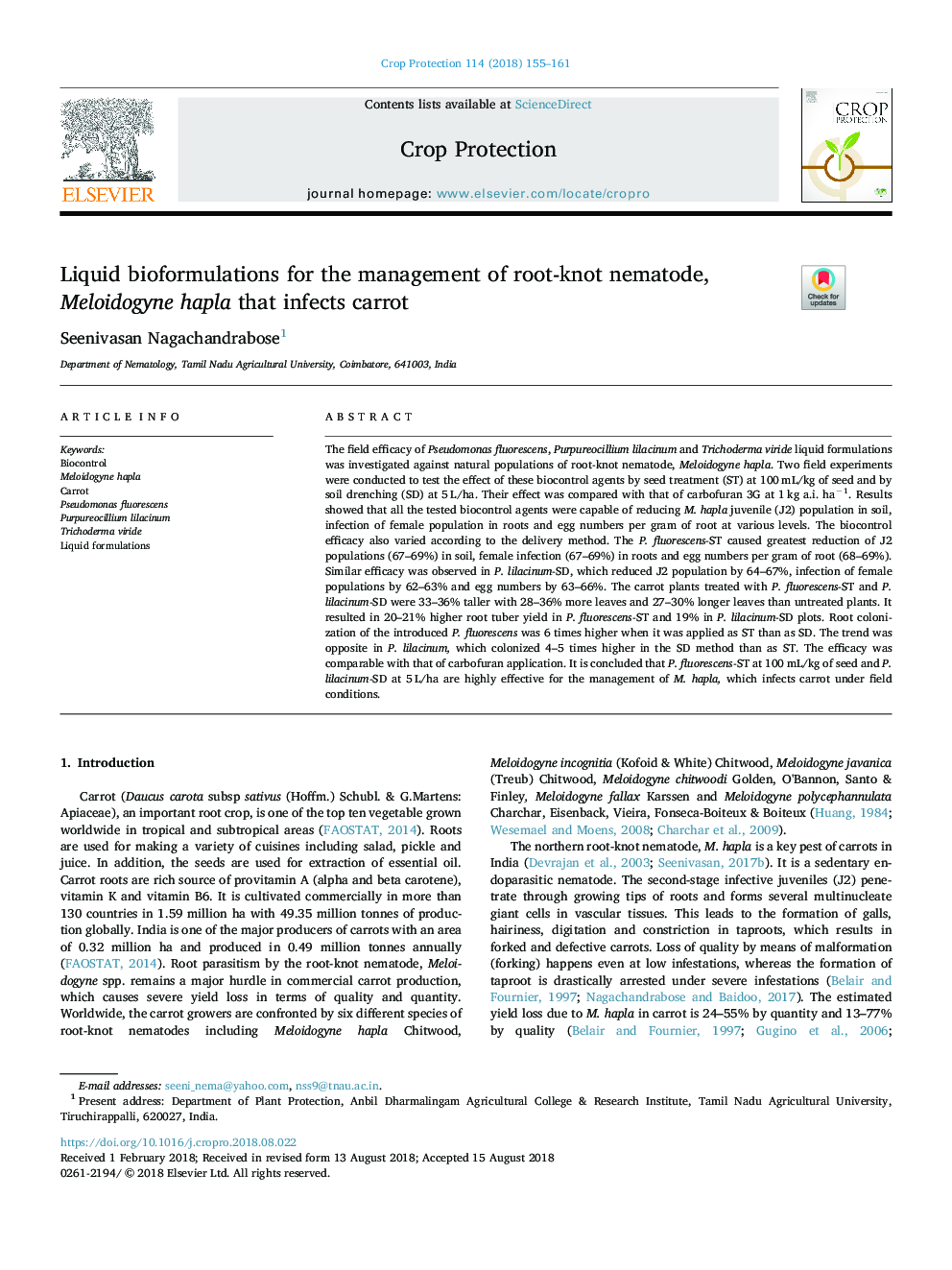| کد مقاله | کد نشریه | سال انتشار | مقاله انگلیسی | نسخه تمام متن |
|---|---|---|---|---|
| 10116580 | 1624273 | 2018 | 7 صفحه PDF | دانلود رایگان |
عنوان انگلیسی مقاله ISI
Liquid bioformulations for the management of root-knot nematode, Meloidogyne hapla that infects carrot
دانلود مقاله + سفارش ترجمه
دانلود مقاله ISI انگلیسی
رایگان برای ایرانیان
کلمات کلیدی
موضوعات مرتبط
علوم زیستی و بیوفناوری
علوم کشاورزی و بیولوژیک
علوم زراعت و اصلاح نباتات
پیش نمایش صفحه اول مقاله

چکیده انگلیسی
The field efficacy of Pseudomonas fluorescens, Purpureocillium lilacinum and Trichoderma viride liquid formulations was investigated against natural populations of root-knot nematode, Meloidogyne hapla. Two field experiments were conducted to test the effect of these biocontrol agents by seed treatment (ST) at 100â¯mL/kg of seed and by soil drenching (SD) at 5â¯L/ha. Their effect was compared with that of carbofuran 3G at 1â¯kg a.i. haâ1. Results showed that all the tested biocontrol agents were capable of reducing M. hapla juvenile (J2) population in soil, infection of female population in roots and egg numbers per gram of root at various levels. The biocontrol efficacy also varied according to the delivery method. The P. fluorescens-ST caused greatest reduction of J2 populations (67-69%) in soil, female infection (67-69%) in roots and egg numbers per gram of root (68-69%). Similar efficacy was observed in P. lilacinum-SD, which reduced J2 population by 64-67%, infection of female populations by 62-63% and egg numbers by 63-66%. The carrot plants treated with P. fluorescens-ST and P. lilacinum-SD were 33-36% taller with 28-36% more leaves and 27-30% longer leaves than untreated plants. It resulted in 20-21% higher root tuber yield in P. fluorescens-ST and 19% in P. lilacinum-SD plots. Root colonization of the introduced P. fluorescens was 6 times higher when it was applied as ST than as SD. The trend was opposite in P. lilacinum, which colonized 4-5 times higher in the SD method than as ST. The efficacy was comparable with that of carbofuran application. It is concluded that P. fluorescens-ST at 100â¯mL/kg of seed and P. lilacinum-SD at 5â¯L/ha are highly effective for the management of M. hapla, which infects carrot under field conditions.
ناشر
Database: Elsevier - ScienceDirect (ساینس دایرکت)
Journal: Crop Protection - Volume 114, December 2018, Pages 155-161
Journal: Crop Protection - Volume 114, December 2018, Pages 155-161
نویسندگان
Seenivasan Nagachandrabose,